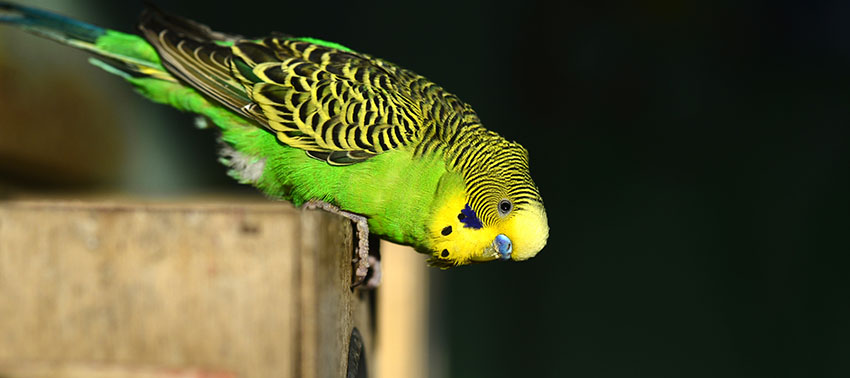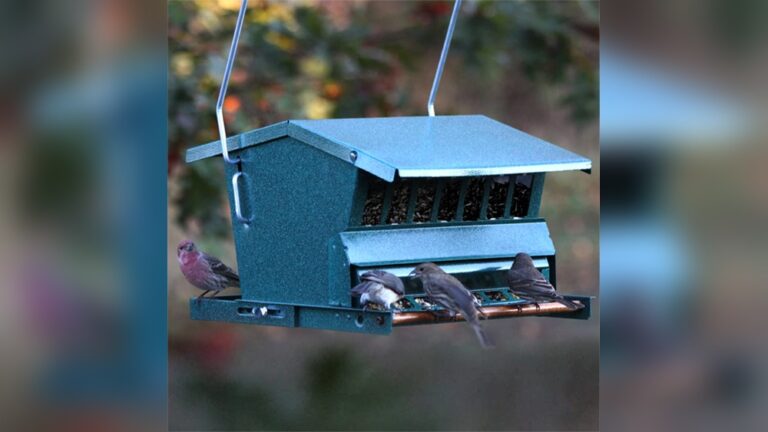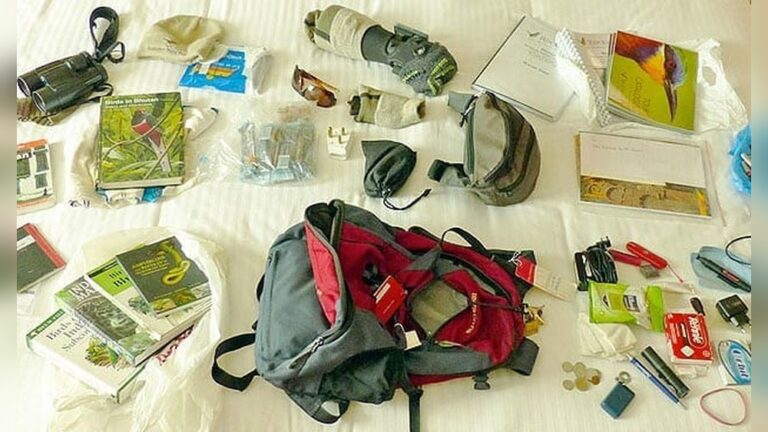Why Do Budgies Bob Their Heads Up And Down
Have you ever watched your budgie bob its head up and down and wondered why it does that? It’s a curious and charming behavior that can leave you guessing.
Understanding why your budgie moves this way can deepen your bond and help you care for your feathered friend better. Keep reading to discover the surprising reasons behind this simple yet fascinating motion—and what it really means for your budgie’s mood and health.

Credit: www.omlet.us
Budgie Head Bobbing Behavior
Budgies often bob their heads up and down. This action may seem strange, but it has many meanings. Understanding why budgies bob their heads helps owners connect with their pets better.
Head bobbing is a common behavior in budgies. It shows how they feel and what they want to communicate. This movement is natural and can tell you a lot about your bird’s mood.
Communication And Attention
Budgies bob their heads to get attention. They want to interact with you or other budgies. This movement is a way to say, “Look at me!” or “Play with me!”
Excitement And Happiness
When a budgie feels happy, it may bob its head quickly. This shows excitement or joy. It can happen during playtime or when the bird sees something interesting.
Seeking A Mate
Male budgies often bob their heads during courtship. This behavior attracts female budgies. It is part of their natural mating ritual to show interest.
Exploring The Environment
Budgies use head bobbing to explore new things. Moving their heads helps them focus and see better. It is a way to understand their surroundings.
Age And Learning
Young budgies bob their heads more often than adults. It helps them learn balance and coordination. This behavior decreases as they grow older.

Credit: www.youtube.com
Communication Signals
Budgies use head bobbing as a way to communicate with their owners and other birds. This simple movement sends clear signals about how they feel or what they want. Understanding these signals helps you connect better with your pet. Head bobbing is not random; it shows specific emotions or intentions.
Attracting Attention
Budgies bob their heads to catch your eye. They want you to notice them and give attention. This action is a call for interaction. It can mean they want to play or be petted. The motion is a friendly way to say, “Look at me!”
Expressing Excitement
When budgies feel happy, they often bob their heads quickly. This shows they are excited or pleased. They might do this when you offer food or new toys. The fast movement signals joy and eagerness. It’s their way of sharing happiness with you.
Social Interaction
Budgies often bob their heads up and down as a way to connect with others. This simple movement is a key part of their social behavior. It helps them express feelings and build relationships with both humans and fellow birds.
Understanding why budgies bob their heads can improve how you interact with your pet. It shows they are comfortable and engaged in their surroundings. This small action can mean a lot in the world of budgie communication.
Bonding With Owners
When budgies bob their heads near their owners, they show trust and affection. This movement often happens during playtime or while talking to them. Budgies enjoy attention and use head bobbing to invite more interaction.
It can also mean they want to mimic your actions or sounds. Budgies learn by copying, so head bobbing helps them connect with you. Responding with gentle talk or petting strengthens your bond.
Interacting With Other Budgies
Head bobbing is a common social signal among budgies. They use it to greet friends or start play. It can also be a way to show excitement or curiosity.
Sometimes, one budgie will bob its head to get the attention of another. This encourages friendly behavior and helps maintain group harmony. Watching these interactions gives insight into their social world.
Mating Displays
Budgies use many ways to show they want to mate. One common way is bobbing their heads up and down. This movement helps them attract a partner and show interest.
Head bobbing is a part of their mating dance. It sends signals to other budgies nearby. The motion shows that the budgie is healthy and ready to find a mate.
Males Use Head Bobbing To Impress Females
Male budgies often bob their heads faster and more often. This catches the female’s attention. It shows strength and good health. Females watch closely to choose the best partner.
Females Respond By Nodding Back
Female budgies may nod their heads in return. This means they like the male’s display. It helps both birds connect and start bonding. The head bobbing becomes a shared dance.
Head Bobbing Helps Build Pair Bonds
Budgies use head bobbing to grow trust and closeness. The movement is part of their daily interaction. It keeps the pair united and ready to raise chicks together.
Age And Development
Young budgies often bob their heads to show curiosity or excitement. Older budgies might do it to communicate or balance themselves. This behavior changes as they grow and learn.
Early Life And Head Bobbing
Young budgies often bob their heads more than adults. This action helps them learn balance and coordination. It also signals excitement or curiosity in baby birds. Head bobbing is a natural part of their growth process.
Development Of Social Skills
Head bobbing helps budgies practice communication. Young budgies use it to get attention from parents or friends. This behavior grows stronger as they age. It is a key part of learning how to interact.
Changes With Maturity
As budgies grow older, head bobbing often decreases. Adult birds bob their heads less frequently and for different reasons. It may show happiness or be part of courtship. This change reflects their developing social habits.
Health And Well-being
Budgies bob their heads for many reasons tied to their health and well-being. This simple motion can tell a lot about their mood and physical state. Watching your budgie’s head movements helps you understand its health better.
Healthy budgies often bob their heads as a sign of happiness or curiosity. It can also mean they want attention or are playing. Knowing what is normal helps spot when something is wrong early.
Normal Vs. Concerning Behavior
Head bobbing is normal if it happens during play or when the bird feels safe. The movement should be smooth and steady. Sudden, fast, or jerky bobbing can signal stress or illness.
Look for other signs too. Breathing problems, fluffed feathers, or loss of appetite with head bobbing need attention. Quiet, tired budgies who bob their heads might feel unwell.
When To Consult A Vet
Consult a vet if the head bobbing is constant and not linked to activity. If your budgie shows other symptoms like sneezing or eye discharge, seek help. Early veterinary care can prevent serious health issues.
Trust your instincts. Sudden changes in behavior or movement always deserve a vet check. Keeping your budgie healthy means acting quickly when signs appear.
Training Tips To Manage Head Bobbing
Budgies bob their heads for many reasons. Sometimes, it shows excitement or a way to get attention. Training your budgie can help control this behavior. It takes patience and gentle steps. Understanding why your bird bobs its head helps guide your training methods.
Start by observing when your budgie bobs its head. Is it during playtime, feeding, or when people enter the room? This information helps you react properly. Calm and consistent training makes the bird feel safe and understood.
Use Positive Reinforcement
Reward your budgie when it stops bobbing on command. Use treats or soft praise. This encourages good behavior. Avoid scolding or punishment. It may cause stress and increase bobbing.
Distract With Toys
Offer toys to keep your budgie busy. Toys reduce boredom, a common cause of head bobbing. Rotate toys regularly to keep interest high. A busy bird is less likely to bob its head excessively.
Set A Routine
Budgies like routine. Feed and play with your bird at the same times daily. A predictable schedule reduces anxiety. Anxiety can cause more head bobbing. A calm bird bobs less.
Limit Attention For Bobbing
Do not give attention when the bird bobs its head for it. This stops the bird from using bobbing to get attention. Instead, give attention during calm moments. This teaches your budgie the right way to get noticed.

Credit: budgiefly.com
How Smart Pets Lover Can Help You with Why Do Budgies Bob Their Heads Up And Down
Practical Learning from Budgie Head Bobbing
Understanding why budgies bob their heads up and down opens up wonderful opportunities for deeper connection and care. This behavior isn’t just a quirky habit—it’s a vital communication signal revealing their social mood, health, or even readiness to bond. Observing these subtle cues can help you gauge your budgie’s well-being and emotional state more accurately.
For example, linking head bobbing with social interaction or mating displays can guide how you engage with your feathered friend, ensuring your approach respects their comfort and natural instincts. Likewise, recognizing changes related to age and development empowers you to tailor your care and training methods as your budgie grows.
- Watch for patterns in head bobbing tied to specific moods or times of day.
- Use gentle, consistent training tips to encourage positive social behavior.
- Monitor head bobbing intensity as an early sign of health shifts.
At Smart Pets Lover, where every chirp tells a story, we encourage pet parents to embrace these learning moments. For further insights or questions about your budgie’s behavior, reaching out to avian specialists or trusted communities can be invaluable. Remember, attentive observation is the first step toward a happy, healthy relationship with your budgie.
Frequently Asked Questions
Why Do Budgies Bob Their Heads Frequently?
Budgies bob their heads to communicate and show excitement. It helps them express happiness, curiosity, or attract attention from others.
Does Head Bobbing Indicate Budgie Health Issues?
Head bobbing is usually normal behavior. However, excessive or slow bobbing may signal illness or discomfort, needing a vet check.
Is Head Bobbing A Mating Behavior In Budgies?
Yes, male budgies often bob heads to attract females. It serves as a courtship display during mating season.
Can Budgies Bob Heads To Get Attention?
Absolutely. Budgies use head bobbing to seek interaction from owners or other birds, signaling they want engagement or playtime.
Conclusion
Budgies bob their heads to communicate and show excitement. This simple action helps them express feelings without words. Watching this behavior can help you understand your pet better. Each bob tells a story, whether it’s happiness or curiosity. Next time you see your budgie bob, remember it’s their way to connect.
Enjoy these small moments with your feathered friend. They make your bond stronger every day.






